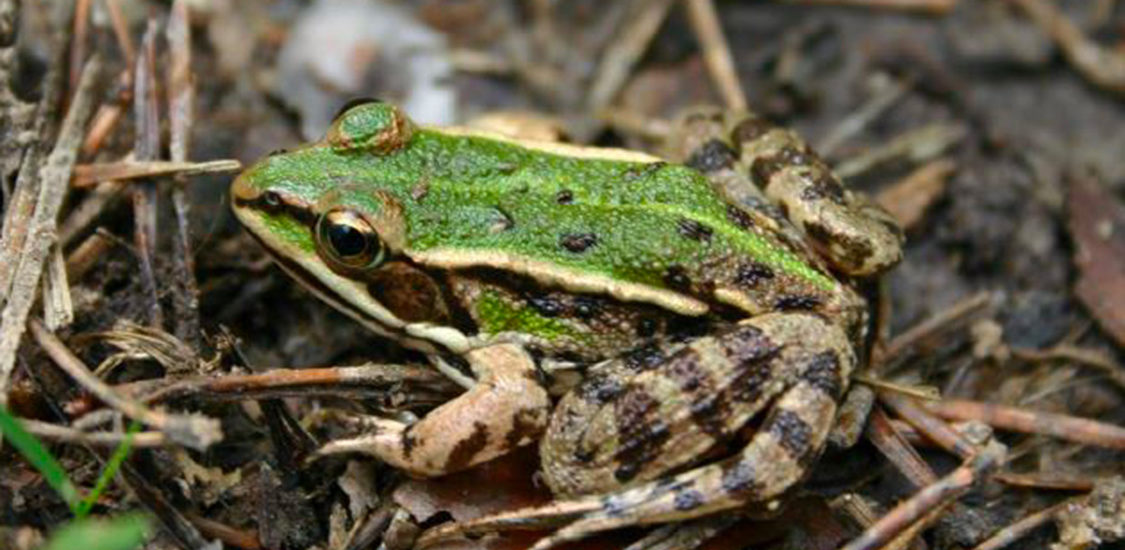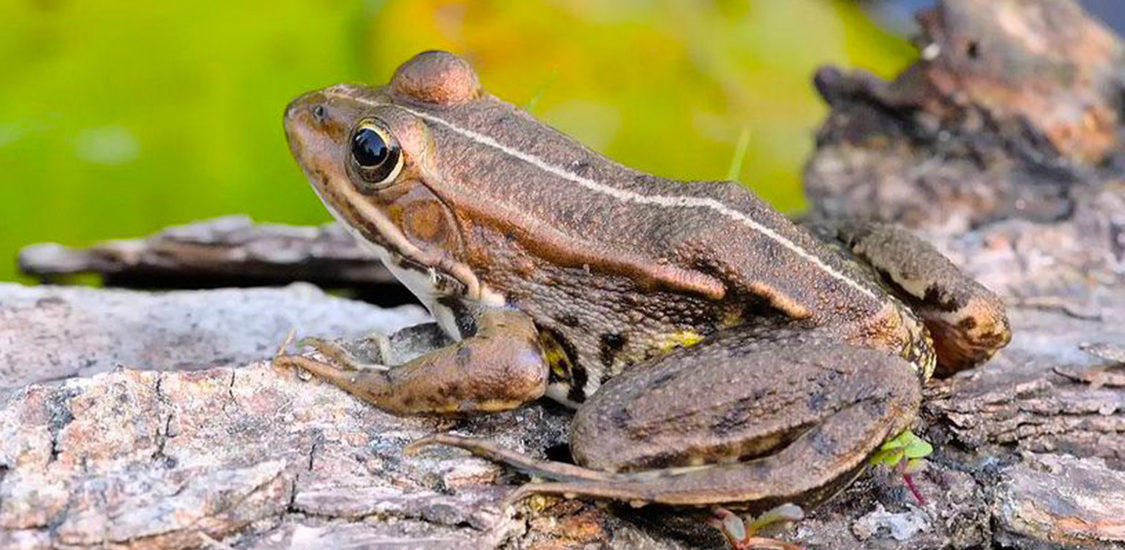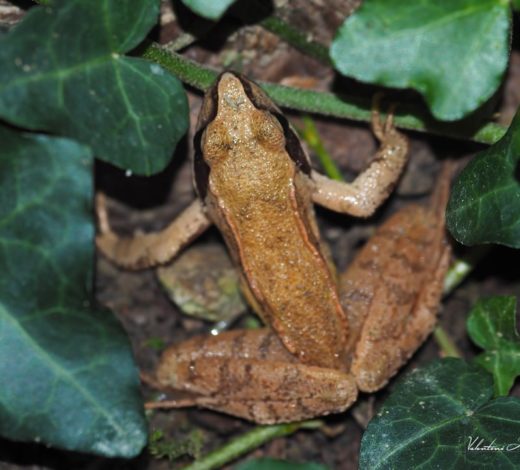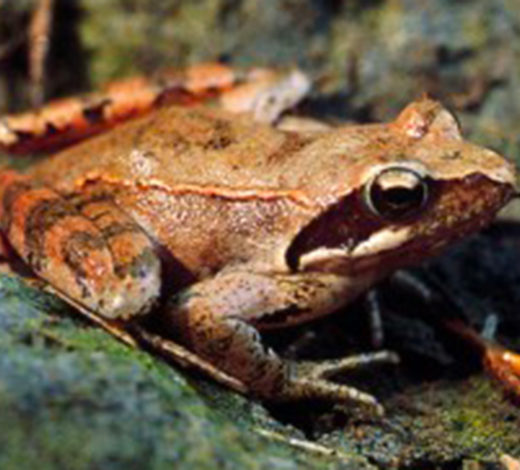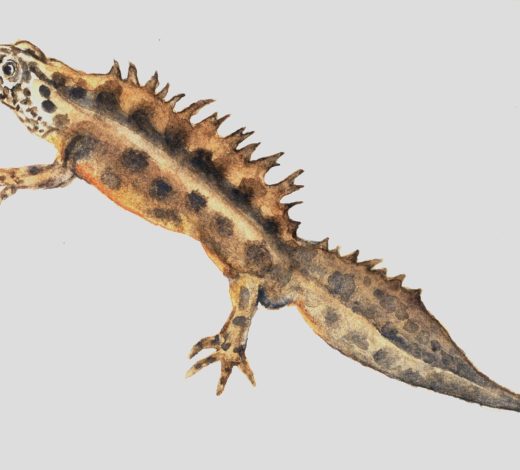Green Frog
(Pelophylax spp.)
Encompassing multiple species, ‘green frog’ implies a set of difficult-to-distinguish species that include the pool frog (Pelophylax lessonae), the edible frog (Pelophylax esculentus), and the marsh frog (Pelophylax ridibunda).
Distribution
This genus of anurans (tailless amphibians) is typical of humid plain and hill areas, but they can also occasionally be found at altitudes of 1200 m in the Alpine range.
Description
These frogs are found in a large variety of colours. Their backs are typically green, but sometimes brown, or a mix of the two. Brown/black bands are always present on the back legs, although not always on the sides. Brown patches are often found on the back. Green frogs are both diurnal and nocturnal, so its natural diet is very diverse.
Habitat
Green frogs live mainly in the water, frequenting damp environments and various bodies of water, which are usually also used as reproductive sites, in open, bushy, and forested areas.
Observation in the Torbiera Reserve
If you happen to approach the edge of a pond or body of water, you will undoubtedly and immediately know whether green frogs are present. You will see them making great leaps (even up to two metres) from the thick vegetation on land, disappearing underwater.
